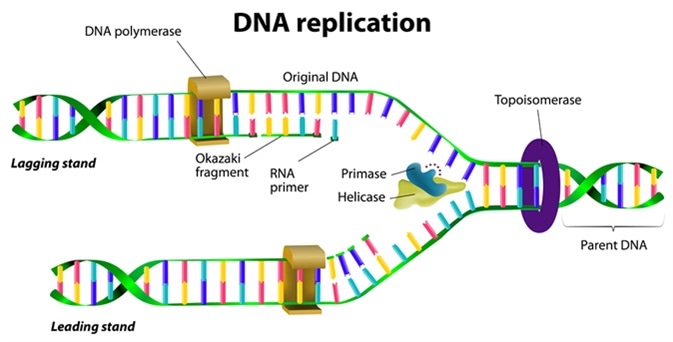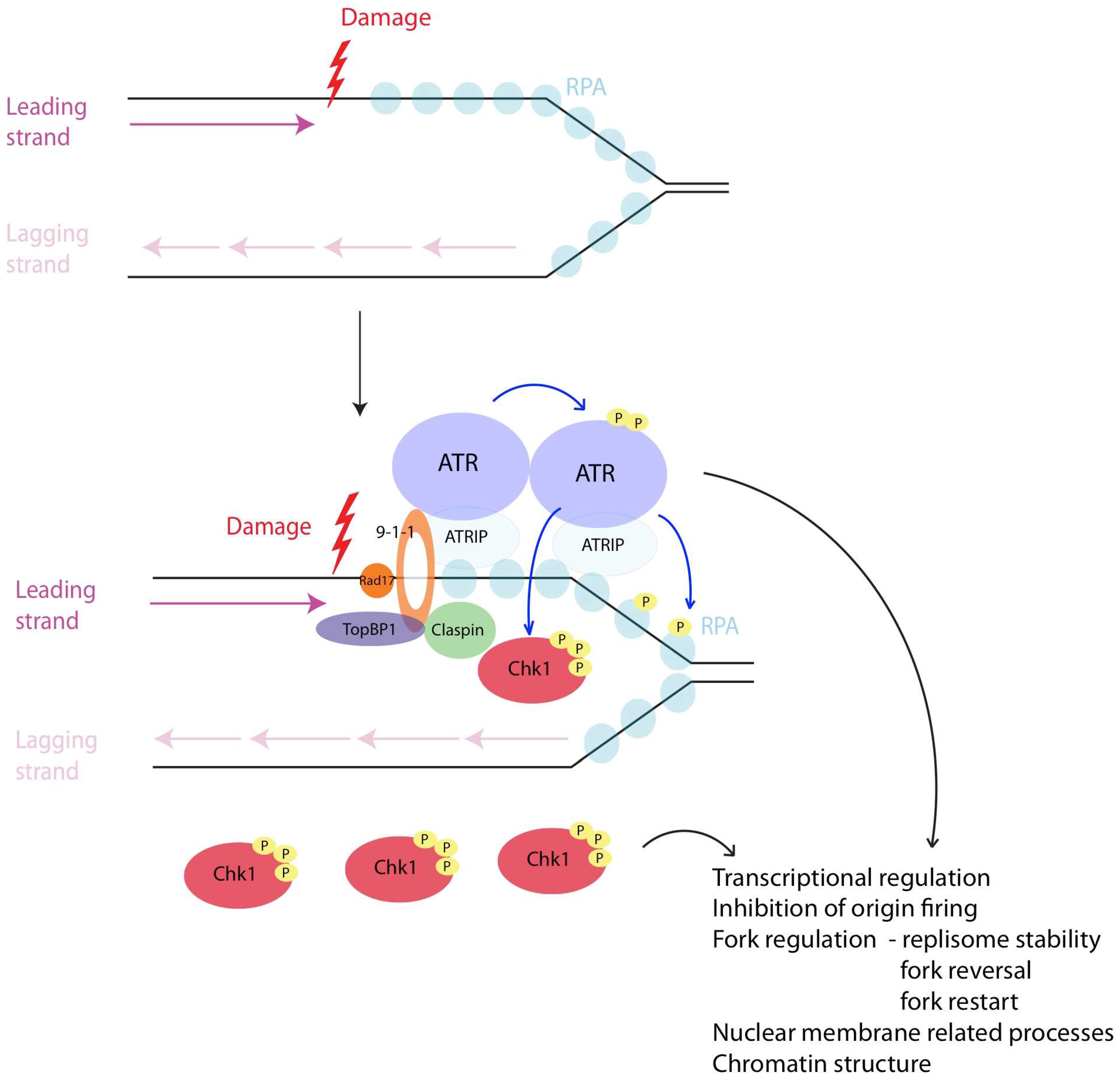
The S Phase (Synthesis) of the Cell Cycle: A Detailed Exploration
The S phase, or Synthesis phase, is a critical segment of the cell cycle during which DNA replication occurs, ensuring that each daughter cell receives an identical copy of the genetic material. This phase is crucial for maintaining genomic stability and is marked by a series of highly coordinated events and regulatory mechanisms.
Overview of the S Phase
The S phase follows the G1 phase and precedes the G2 phase within the interphase of the cell cycle. Its primary function is to replicate the cell's DNA, producing two identical sets of chromosomes, each consisting of two sister chromatids. This meticulous process guarantees that each daughter cell inherits an exact copy of the parent cell's genome during cell division.
Key Processes in the S Phase
Initiation of DNA Replication
DNA replication begins at specific locations in the genome known as origins of replication. These origins are recognized and prepared for replication through the following steps:
-
Origin Recognition and Licensing:
- Origins of Replication: Eukaryotic chromosomes contain multiple origins of replication to ensure timely and efficient DNA replication.
- Origin Recognition Complex (ORC): The ORC binds to the origins during the G1 phase, marking them for activation in the S phase.
- Licensing Factors: Proteins such as Cdc6 and Cdt1, along with the Minichromosome Maintenance (MCM) complex, form the pre-replicative complex (pre-RC), licensing the origins for replication.
-
Helicase Activation and DNA Unwinding:
- Activation: Cyclin-dependent kinases (CDKs) and Dbf4-dependent kinase (DDK) phosphorylate components of the pre-RC, activating the MCM helicase complex.
- Unwinding: The MCM helicase unwinds the double-stranded DNA, creating single-stranded templates necessary for replication.
-
Formation of the Replisome:
- Replisome Assembly: A multi-protein complex known as the replisome assembles at the replication forks. It includes DNA polymerases, primase, and other auxiliary proteins.
- Primase Activity: RNA primase synthesizes short RNA primers on the single-stranded DNA template to provide a starting point for DNA polymerase.

DNA Synthesis
The actual replication of DNA occurs through the coordinated activity of various enzymes and proteins:
-
Leading and Lagging Strand Synthesis:
- Leading Strand: DNA polymerase ε continuously synthesizes the leading strand in the direction of the replication fork movement.
- Lagging Strand: DNA polymerase δ synthesizes the lagging strand discontinuously in short segments called Okazaki fragments, which are later joined together.
-
Okazaki Fragment Processing:
- Primer Removal: The RNA primers on the lagging strand are removed by RNase H and DNA polymerase δ, which also fills in the resulting gaps with DNA.
- Ligation: DNA ligase seals the nicks between Okazaki fragments, forming a continuous DNA strand.
Chromatin Assembly
As the DNA is replicated, it must be packaged into chromatin to fit within the nucleus and function properly:
- Histone Production: During the S phase, histones (the proteins around which DNA is wrapped) are synthesized in large quantities.
- Nucleosome Assembly: Newly synthesized DNA is rapidly assembled into nucleosomes, the basic units of chromatin, consisting of DNA wrapped around histone octamers.
- Chromatin Remodeling: Chromatin assembly factors and remodeling complexes help position nucleosomes and modify histones to facilitate replication and gene regulation.
Regulation of the S Phase
The S phase is tightly regulated to ensure the fidelity and integrity of DNA replication. Key regulatory mechanisms include:
- Cyclin-Dependent Kinases (CDKs): - CDK2-Cyclin A: This complex drives the initiation and progression of the S phase by phosphorylating target proteins involved in replication.
- Checkpoint Kinases: - ATR (Ataxia Telangiectasia and Rad3-related Protein): ATR is activated by replication stress, such as stalled replication forks, and plays a crucial role in pausing replication to allow for DNA repair. - CHK1 (Checkpoint Kinase 1): CHK1 is involved in halting the cell cycle in response to DNA damage, providing time for repair mechanisms to act.
- Replication Licensing: - Geminin: This protein inhibits the licensing factor Cdt1, preventing re-replication and ensuring that each segment of DNA is replicated only once per cell cycle.
DNA Damage Response and Repair
TheS phase includes robust mechanisms to detect and repair any DNA damage that occurs during replication:
- Replication Checkpoints: Surveillance mechanisms monitor the replication process, and any replication stress triggers a halt in the cell cycle to allow for repair.
- Repair Pathways: Various DNA repair pathways, such as homologous recombination and base excision repair, are employed to fix damage and ensure the fidelity of DNA replication.

Clinical Significance
Errors in DNA replication during the S phase can lead to mutations, genomic instability, and diseases such as cancer. Understanding the molecular mechanisms of the S phase has significant implications for cancer treatment:
- Chemotherapy: Many chemotherapy drugs, such as hydroxyurea and gemcitabine, target DNA synthesis, interfering with replication in rapidly dividing cancer cells.
- Targeted Therapies: Inhibitors of specific replication proteins (e.g., ATR inhibitors) are being developed to exploit the vulnerabilities of cancer cells with defective DNA damage responses.
Research and Future Directions
Continued research into the S phase focuses on understanding the intricate details of DNA replication and its regulation. Future directions include:
- Epigenetic Regulation: Investigating how epigenetic modifications, such as DNA methylation and histone acetylation, regulate gene expression during the S phase.
- Stem Cell Biology: Exploring how interphase regulation, particularly the S phase, differs in stem cells, which must balance self-renewal with differentiation.
- Novel Therapeutics: Developing drugs that specifically target cell cycle proteins to halt the proliferation of cancer cells without affecting normal cells.
S Phase (Synthesis) FAQ
Epigenetic modifications, such as DNA methylation and histone modifications, play important roles in regulating gene expression during the S phase. These modifications can influence the accessibility of DNA to transcription factors and RNA polymerases, thereby controlling the expression of genes involved in DNA replication, cell cycle progression, and other cellular processes. Understanding the dynamics of epigenetic regulation during the S phase provides insights into the molecular mechanisms underlying cell proliferation and differentiation.
Errors or disruptions in DNA replication can have profound consequences for cellular function and genome stability. Failure to accurately replicate the genome can lead to mutations, chromosomal abnormalities, and genetic diseases. Cells have evolved elaborate mechanisms, such as DNA repair pathways and checkpoint controls, to detect and repair replication errors or DNA damage that occurs during the S phase.
The S phase is tightly coordinated with other cellular processes to ensure proper cell cycle progression and genome integrity. For example, DNA replication is coordinated with cell growth, metabolism, and organelle biogenesis to meet the increased demands for cellular components during proliferation. Additionally, checkpoint mechanisms monitor the completion of DNA replication and prevent premature entry into the next phase of the cell cycle.
DNA replication in the S phase begins at specific sites called origins of replication. Initiation involves the assembly of the pre-replication complex (pre-RC) during the G1 phase, which includes origin recognition complexes (ORCs), Cdc6, Cdt1, and MCM helicase. The transition to S phase activates CDK2/Cyclin A and DDK (Dbf4-dependent kinase), which phosphorylate components of the pre-RC, allowing the assembly of the replisome and the start of DNA synthesis. This ensures that each segment of the genome is replicated only once.
Checkpoint kinases such as ATR and Chk1 play pivotal roles in coordinating the S phase with other cell cycle phases:
- DNA Damage Response (DDR): ATR-Chk1 pathway detects DNA damage and replication stress, halting cell cycle progression to allow repair.
- Replication Timing: Ensures replication origins fire in a regulated manner, coordinating with S phase progression and preventing premature entry into G2.
- G2/M Transition: Ensures all DNA is replicated before mitosis. Incomplete replication or damage triggers ATR-Chk1, preventing activation of Cdc25 and delaying entry into mitosis until replication is complete and DNA integrity is secured.
Conclusion
The S phase is a meticulously regulated period of the cell cycle dedicated to the accurate replication of the genome. It involves complex processes of origin activation, DNA synthesis, chromatin assembly, and damage repair. Proper regulation of the S phase is essential for maintaining genomic integrity and preventing disease. Advances in understanding these processes provide crucial insights into cell biology and potential therapeutic strategies for diseases resulting from replication errors.
You can check out this article on S-phase https://www.albert.io/blog/what-occurs-in-the-s-phase/ to learn more





